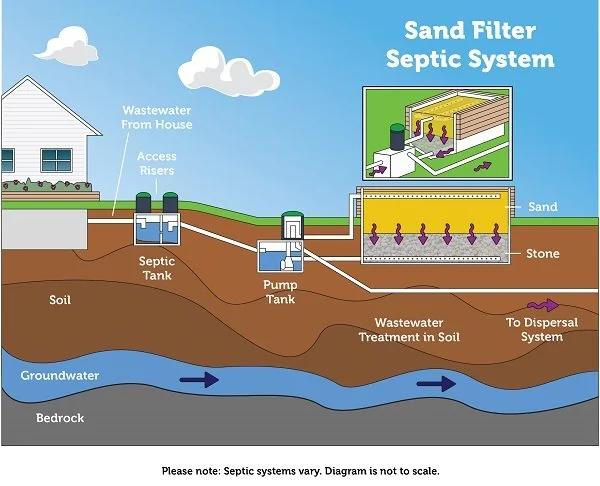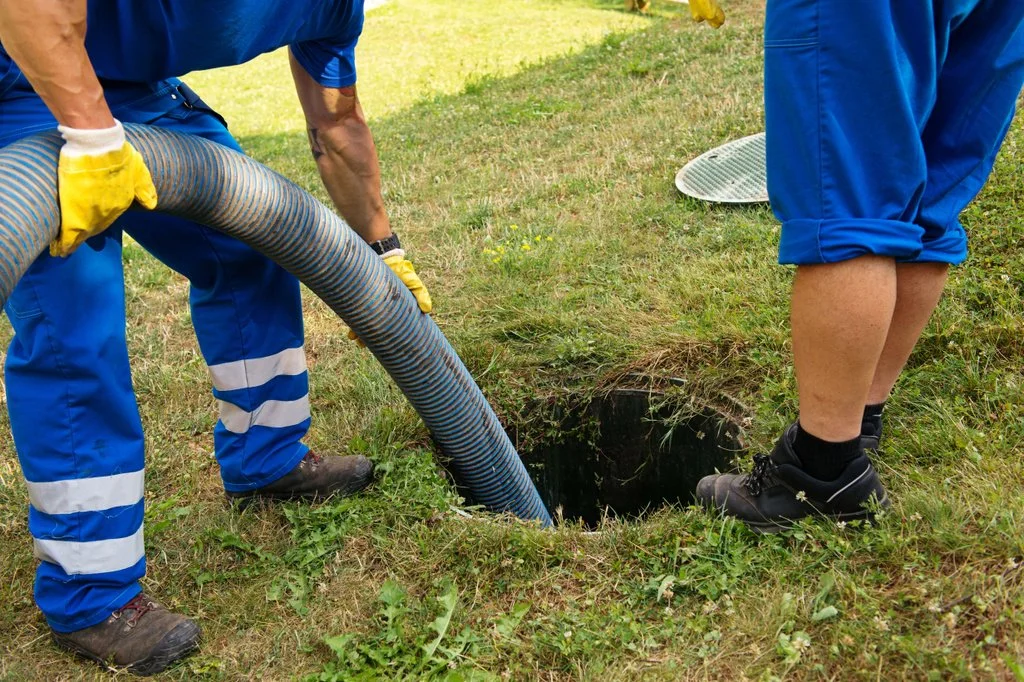Wastewater
Treatment
Wastewater treatment is a critical but often overlooked aspect of home infrastructure. For homes not connected to municipal sewer systems—as is the case Down East— proper onsite wastewater management is essential for both environmental protection and public health.
Roughly 50% of households in North Carolina, and 80% in coastal areas, use a septic system to treat household waste. Septic systems are a low maintenance, safe, and effective waste treatment option.
Conventional Septic System
What is a conventional septic system? Household waste flows into a septic tank and from there to a drain field, which is often located in the front or back yard. The drain field materials, such as gravel, and surrounding soil filter and treat the effluent.
How long does this system last? The lifespan varies, but a well constructed and properly maintained system may last several decades or more.
What does maintenance entail?
Septic systems should be regularly inspected (every 1-3 years)
The tank will need to periodically be pumped to remove solids (every 3-5 years)
If your system is 25-30 years or older, start planning for an upgrade.
When to inspect? If you haven’t had your system inspected regularly, the best time to inspect is now.
Do not assume that simply because the water flows down the drains in your house that there are no issues, and do not wait for issues to appear before scheduling an inspection or performing maintenance.
How to schedule an inspection? Contact Carteret County Environmental Health Services.
Source: US EPA
Other Onsite Wastewater Options
-

Mound Septic System
The drain field is installed in a manmade sand mound. Effluent from the septic tank is pumped to the drain field, where it is filtered through the sand mound before entering the soil.
-

Sand Filter System
Effluent is pumped from the septic tank into a concrete box filled with sand material. As the effluent drains through the box, it is treated, and the treated wastewater is then discharged into the drain field. A sand filter system can be installed above or below ground, making it a good solution for sites that may have drainage problems.
-

Constructed Wetland
Effluent from the septic tank flows into a wetland cell, which is typically lined with an impermeable liner, filled with sand and gravel, and planted with wetland plants that can handle permanently saturated environments.
-

Aerobic Treatment Unit
This type of unit replicates the processes that occur at a municipal wastewater treatment plant, but on a much smaller scale. This system does not require a large footprint and can be used to treat waste from homes on very small lots, however, it is more expensive and requires lifetime maintenance.
WHAT TO DO IF YOUR SEPTIC SYSTEM HAS BEEN FLOODED?
If your system has been flooded, contact Carteret County’s Health Department to have it inspected as soon as it is safe to do so to ensure that it is functioning properly.
In addition to regular inspections and maintenance, homeowners can also reduce the sensitivity of their septic system to flooding, including chronic higher water tables, by:
Installing a septic tank riser, which prevents floodwaters from being able to enter the system.
Raising the elevation of the system, such as by building a mounded drainage system or installing the tank above the water table.


